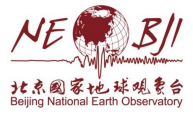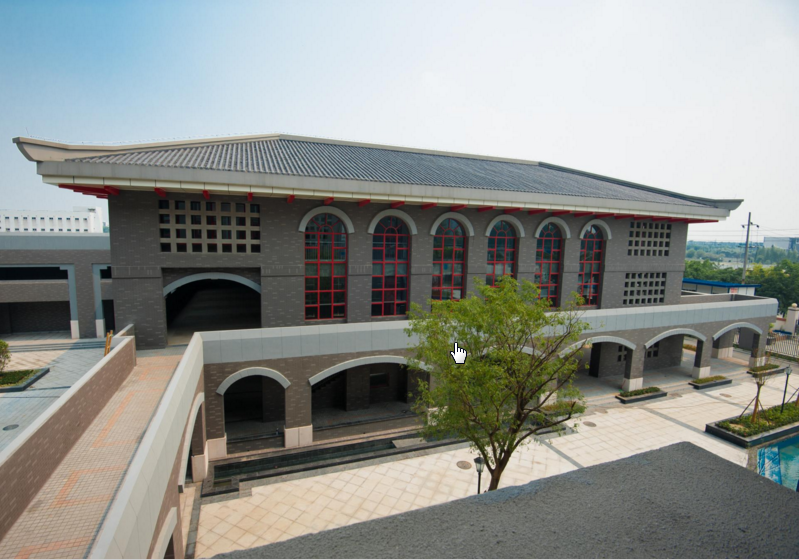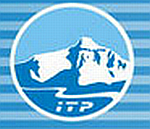Members
 |
University of National and World EconomySofia |
| Outline The University of National and World Economy can be seen in the future as a leader among the higher educational institutions in Southeastern Europe that educate students and conduct researches in the field of economics, management and administration, law and politics. The University of National and World Economy is responsible for sustaining and developing highly educated academic body of prominent, nationally and internationally acknowledged professors and scientists. The University of National and World Economy is called to strengthen and develop its positions as a kind of undisputed, respected and valuable territory of the national and European educational and research space. The effects of natural disasters are very serious and the destruction caused may take a very long time to recover. Related damage is severe and it may cause relief expenses of billions of Euros. With the increase of natural disasters that have occurred in the past years, it is expected their frequency will continue to increase in the coming years. At present, at global and national levels, a wide range of multiple scientific and scientific-applied research activity in the area of disaster risk reduction concerning individual types of disasters is conducted. Modern information and communication technologies can facilitate significantly the decision-making processes from the point of view of disaster risk reduction. Due to disaster risk reductions multidisciplinary nature, people from various backgrounds, such as industry, diverse geographical and global settings, not-for-profit organization backgrounds, agriculture, marine life, welfare, risk management, safety engineering and social networking services will be included. The Science Research Center for Disaster Risk Reduction at the University of National and World Economy actively works in this important area and tries to share its results with world-famous professional organizations. [detail] --> |
|
 |
The Institute for Catastrophic Loss Reduction (ICLR), Western UniversityOntario |
| Outline While USC was initially established as primarily a regional teaching university for undergraduates, it is now evolving into a targeted research university. The recent appointment of Professor Roland De Marco as USC's first Pro Vice-Chancellor of Research, underlined the university's commitment to supporting excellence in research. Three Research Centres now exist as focal points at USC: GeneCology Research Centre; Forest Industries Research Centre; and Sustainability Research Centre. Additionally, several other research clusters or themes have developed and new ones are emerging. Through these focal points, USC maintains research collaborations worldwide with a strong emphasis in the Asian-Pacific region. USC has recently enhanced its research profile through the recruitment of outstanding researchers and up-to-date infrastructure. The Sustainability Research Centre (SRC) was formalised as one of the University of the Sunshine Coast's flagship research concentrations in September 2007. In 2012 the SRC was also designated as a Tier 1 Research Centre, one of only three in the university. Within the past year, the SRC has made two critical research-based hires in geosciences (Professors Patrick Nunn and Roy C. Sidle) to increase its visibility and profile in biophysical sciences to complement the strong faculty counterpart in social sciences. The SRC has the capacity to attract top-level Honours students from various faculties and support post graduate students as well as Research Fellows. The SRC offer both undergraduate majors and minors in Sustainability and a Ph.D. by research in Sustainability. The core focus of the sustainability educational programs aligns with the social, behavioural, biophysical, and economic sciences. In addressing concerns of society and the environment, this important transdisciplinary research area offers a broad spectrum of opportunity.
[detail] --> |
|
Chile - Centro de Investigación para la Gestión Integrada del Riesgo de Desastres - CIGIDEN
 |
Centro de Investigación para la Gestión Integrada del Riesgo de Desastres - CIGIDENSantiago |
| Outline Disasters of natural origin present a series of technological, social and political challenges. From CIGIDEN (Research Center for Integrated Disaster Risk Management - CIGIDEN), we are generating scientific and technical knowledge to help improve the way the risk management cycle is approached in our country. We are an association of four universities (Pontificia U. Católica de Chile, U. Nacional Andrés Bello, U. Técnica Federico Santa María and U. Católica del Norte) which was born in response to the call made by the Chilean Government Scientific program in its fourth national competition of Priority Areas Research Centers to address research on disasters and their consequences. Our work is carried out under the conceptual framework of resilience, orienting our results towards the reduction of the initial impact of extreme events, and to restore and improve the functionality of the different systems that are affected by them in shorter periods.We are a research center of excellence whose mission is to develop, integrate and transfer scientific knowledge, and to form advanced human capital that contributes to reduce the social consequences of extreme natural events. We are organized in three research Clusters, namely:
Our mission is to guide the discussions and decisions that must be taken in the face of disasters, through scientific and technical evidence, to help implement improvements that increase the resilience of the country. Our main goal is to contribute to increasing levels of resilience and help mitigate the consequences caused by natural disasters. [detail] --> |
|
 |
Center for Energy and Environmental Policy Research (CEEP)
|
| Outline The Center for Energy & Environmental Policy Research, Beijing Institute of Technology, was founded in 2009. The current director of CEEP-BIT, Prof. Yi-Ming Wei, established a CAS-CNPC Joint Center for Energy and Environmental Policy in 2006, and held the founding director.. The core research team then joined BIT and kept on contributing to research, education and international communication in the fields of energy and environmental policy.According to the statistical analysis from RePEc in June,2015,CEEP-BIT ranks 45, top 10% institutions in the field of Environmental Economics at IDEAS(http://ideas.repec.org/top/top.env.html), and ranks 52,top 10% institutions in the field of Energy Economics at IDEAS (http://ideas.repec.org/top/top.ene.html). CEEP-BIT conducts researches on energy economics, climate policy and environmental management armed with qualitative and quantitative tools, aiming to provide scientific basis for public and private decisions in strategy planning and management that needed to cope with China's increasing demand for energy as well as the challenges of adapting to and mitigating climate change. CEEP also serves as a professional education center and a platform for international exchange in the area of energy and environmental policy research.[detail] --> |
|
 |
Integrated Risk Governance Project (IRG-Project)
|
| Outline The State Key Laboratory of Earth Surface Processes and Resource Ecology (Beijing Normal University) is an applied geology and ecology research laboratory. The State Key Laboratory of Earth Surface Processes and Resource Ecology of BNU focuses on studying the semi-arid grassland and the transitional zone between the pastoral and agricultural areas in northern China and the coastal areas. It deems sustainable ecosystem management and restoration of degraded ecosystems as the overall target while it strives to advance resource ecology research and dynamic modeling of ecosystems at multiple scales. The Laboratory conducts experiments and studies by integrating multiple disciplines to explore the geographical processes and the rational use of renewable natural resources. To date, it has established four major research themes including earth surface processes, resource ecology, earth surface system modeling and simulation, and sustainable regional development modeling. The goal is to provide technical support for the prevention and control of land degradation and restoration of degraded ecosystems in ecologically fragile regions. The objective also is to build the Laboratory into a research center and education base that specializes in earth surface processes and resource ecology, with important international influence and status. The Laboratory is headed by Professor Peijun Shi. The Director of the Academic Committee is Academician Zhisheng An. [detail] --> |
|
 |
School of Environmental Science and Engineering
|
|
Outline The School of Environmental Science and Engineering (SESE) of Chang'an University offers the first level two doctoral degrees in water conservancy and environmental science and engineering. SESE also hosts a number of key laboratories, including the laboratory for subsurface hydrology and ecological effects in arid regions for the Ministry of Education, the Open Research Laboratory of Water Resources and Land in Arid and Semi-arid Areas for the Ministry of Land and Resources, the Chang'an University sub-center of urban environment and sustainable development and the laboratory center of water, environmental, chemical and bioengineering for the Ministry of Education. The SESE currently has 122 staff, including 26 professors, one academician of the Chinese Academy of Engineering and five Distinguished Professors of the "Hundred Talents Program" in Shaanxi Province. SESE College also has a Changjiang scholar innovation team attached to the Ministry of Education's program of "arid groundwater resources development and utilization and water environment protection". The SESE has undertaken more than 100 research projects including the "973" and "863" projects, Chinese Natural Science Foundation project, projects provided by the Ministries of Science and Technology, Education, Communications, Land and Resources, Construction and the China Geological Survey. Annual research funding is about 30 million RMB. The SESE has produced a wealth of scientific research, with more than 50 national, provincial and ministerial scientific and technological awards, including the first and the third prize for national scientific and technological progress. SESE outputs include publication of more than 60 academic books and 500 academic papers of which many papers have been published by SCI, EI and ISTP database. [detail] --> |
|
|
|
Institute of Tibetan Plateau Research (ITP), Chinese Academy of Sciences (CAS)Beijing |
| Outline The Institute of Tibetan Plateau Research (ITP) was founded by the Chinese Academy of Sciences (CAS) in 2003. ITP aims to better understand the uplift of the Tibetan Plateau and its climate and environmental changes, as well as enhance sustainable development in the region. ITP has three campuses in Lhasa, Beijing and Kunming, respectively. It also operates the Tibetan Observation and Research Platform (TORP), which comprises five field stations on the Tibetan Plateau. They are: the Namco Monitoring and Research Station for Multispheric Interactions; the Southeast Tibet Observation and Research Station for the Alpine Environment; the Qomolangma Atmospheric and Environmental Observation and Research Station; the Muztagh Ata Westerly Observation and Research Station; and the Ngari Desert Observation and Research Station. These facilities make long-term, continuous observations of geophysical, atmospheric and tectonic phenomena to understand land surface processes and environmental changes on the Tibetan Plateau. In addition, ITP has a field network to monitor persistent organic pollutants, one to study stable isotopes in precipitation, and a seismic network to study the deep structure of the Earth and seismicity across the Tibetan Plateau. [detail] --> |
|
 |
Beijing National Earth Observatory, Institute of Geophysics
|
| Outline Beijing National Earth Observatory (NEOBJI) is managed by the Institute of Geophysics (IGP), China Earthquake Administration (CEA), which is an important field arm of IGP and having held a leading role in earthquake and multi-disciplinary geophysical observation in China for many years. NEOBJI has a long glorious history. YEAR_1930. The first seismic station in mainland China, which was installed by Chinese seismologists in 1930. After the Wiechert seismograph and Galitzin-Willip seismograph were deployed, the first seismograph was recorded on Sept.30, 1930. YEAR_1930 to YEAR_1937. 2427 earthquakes were recorded. Bulletins and observation reports were published monthly and the data were exchanged with seismological agencies all over the world, which makes NEOBJT as a landmark of the modern seismological observation in China. YEAR_1957. Renamed as Beijing Observatory, and obtained earthquake waveform data since June.1, 1957, with the installed 513-type mid-strong seismometer. The geomagnetism records was first obtained in 1957. YEAR_1982. A 202m-depth cave for geophysical observation was completed with total inner length of 317.5m. Year_1982 to Year_2010. Seismometers, a gravimeter, and tilt-meters were installed in the cave, while geo-magnetometers and instruments for water level were installed in the yard and down in boreholes. YEAR_1984. Be awarded the "International Earth Observation Centenary" Silver Medal by IAGA in recognition of the outstanding contribution in Geomagnetic Observation.[detail] --> |
|
 |
State Key Laboratory of Geo-hazards Prevention and
|
|
Outline It was recognized as the Key Laboratory of Sichuan Province by the local government in 2001. And one year later, it was developed as the State Key Laboratory Base, which was under the joint construction of Ministry of Science and Technology and Sichuan Province. In 2003, it became Key Laboratory of the Ministry of Land and Resources. Upgraded to a State Key Laboratory by the Ministry of Science and Technology in 2007, SKLGP now is an exclusive laboratory in the field of geohazard prevention in China. The present director of SKLGP academic committee is Academician Wang Sijing from Chinese Academy of Engineering, and Professor Huang Runqiu is in charge of the laboratory. Targeted at the applied basic research of geohazard prevention and geoenvironment protection, SKLGP provides theories and technologies for natural disaster prevention and the state major projects. With its orientation, SKLGP integrates the generation background, forming mechanism, early identification, monitoring and early warning of serious geological disasters, which are either induced by nature or human activities, as well as the theories and methods of project management, forming a first-tier research centre, which combines applied basic research, the development and promotion of advanced technologies, the education of talents with international communication and cooperation, in a comprehensive way to support the national objective of geohazard prevention and geoenvironment protection theoretically and technologically. With 60 years of state key discipline "geological engineering" development in Chengdu University of Technology, four research directions have been established in SKLGP under the combination of discipline frontier and key problems. They are: 1) serious geohazard assessment and prevention, 2) crossfeed action between human activities and geoenvironment and disaster control, 3) regional geoenvironment evaluation and protection, 4) geohazard monitoring and early warning and geoinformation systems. In recent ten years, SKLGP has conducted nearly 1200 national and provincial research projects, solving series of theoretical and technological obstacles in geohazard prevention and major state projects. The research subjects involves geoenvironment protection and geohazard prevention, water resources and hydropower development, highway, railway, civil aviation airport construction, urban subway and development of high-rise building, etc. Through the implementation of the research projects, excellent results have been achieved: 3 first prizes and 2 second prizes of National Science and Technology Progress Award, 1 prize of China International Science and Technology Cooperation Award, 1 prize of Gold Medal of National Patent Achievement. And over 60 projects were awarded at ministerial or provincial level. More than 50 monographs and text books and over 3000 papers have been published in home and abroad. The total economic benefits of the projects have reached billions of yuan. [detail] --> |
|
 |
Key Laboratory of Coastal Disaster and Defence (KLCDD), Hohai UniversityNanjing |
| Outline The Key Laboratory of Coastal Disaster and Defence (KLCDD) at Hohai University was founded by Ministry of Education, China in 2005, and consequently passed the government assessment in 2008. The laboratory operates on the policy that the director takes the full responsibility of administration under the supervision of academic committee, and it heavily relies on broader national and international collaborations for cross-disciplinary integrations. The main objective of the KLCDD is to explore and develop new ideas, new approaches and new technologies for making the coastal environments more resilient to the impacts of natural hazards and human induced threats. The research activities in the KLCDD are mainly related to coastal disaster and defence, including the mechanisms of generation and development, prediction methods and warning systems, reduction and protection technologies, and evaluation and management of coastal disaster. The laboratory has particular interests in the areas of sea level rise and its impact, formation and propagation of storm surge and tsunami, saltwater intrusion in estuary, warning technology of storm surge, coastal dynamics of disaster process and its induced sediment transport, prediction of change of environmental factors in coast and estuary, design criteria of protection engineering, innovative technologies for protection engineering, damage assessment and recovery measures of protection engineering, the impact evaluation of coastal disaster on ecological environment and social economy and countermeasures [detail] --> |
|
 |
Institute for Disaster Management and Reconstruction (DMR)
|
|
Outline The Hong Kong Polytechnic University and Sichuan University jointly set up China's first "Institute for Disaster Management and Reconstruction" (IDMR) after two deadly earthquakes struck the province in five years. The Institute for Disaster Management and Reconstruction was jointly established this month by Polytechnic University and Sichuan University to support the province's reconstruction and development. The Institute is first of its kind on " disaster preparedness, disaster risk reduction and disaster reconstruction" on Chinese Mainland.. The IDMR is situated at SCU Jiang An Campus. It covers an area of 20,000 square meters and encompasses six laboratories and one disaster data base and resource center.
|
|
|
|
Natural Disaster Research Institute
|
| Outline Our team is a professional research team and has academic innovation predominated by young and mid-career scientists which including 3 professors, 2 associate professors, 2 lectures, 3 post-doctoral researchers, 10 doctoral candidates and 20 postgraduate students. Our research team devotes to the research and development on integrated risk assessment and risk prevention and control of environment and disaster, emergency decision-making of sudden environmental accidents, strategical environmental assessment, ecological environment security and risk assessment, regional environmental planning, assessment and management. In these field, our team have made groundbreaking research. Currently, we have conducted more than 100 scientific and counseling projects support by national, provincial, local governments and doctoral fund, and over 300 articles have been published on top international and Chinese journals, 60 of which are indexed by SCI and 20 articles' impact factor are beyond the average. In addition, we have published 10 academic works, obtained 5 software copyrights, established 5 national or industry standards and achieved 3 patents of invention. [detail] --> |
|
College of Engineering, Ocean University of ChinaQingdao |
|
| Outline College of Engineering was founded in 1993, whose predecessor is Department of Ocean Engineering established in1983. It is a domestic well-known engineering faculty with distinctive feature of Ocean Engineering. In recent years, aiming at academic excellence and benefiting society, our college has made remarkable achievements in disciplinary development, education, research and social service. As one of the most dynamic colleges, we are striving for prosperous future in conformity with national mid-long development planning.
[detail] --> |
|
 |
College of Architecture and Environment
|
|
Outline Up to now, the college has integrated various disciplines including engineering mechanics, civil engineering, environmental science, architecture, planning and garden engineering. It's characterized by its strong strength of technology& engineering combined with humanity, science with art, research with practice and teaching with innovation. It serves as an international frontrunner in scientific research, and also endeavours to boost local economic development in social services. With 4 Doctor's degree authorization centres of first-level discipline, 7 Master's degree authorization centres of first-level discipline, 3 Professional Master's degree authorization centres and 10 Undergraduate degree programmes, the college has become a well-known fostering base for highly specialized talents in engineering mechanics, civil engineering, architecture, environmental protection, etc. In more than 20 years, the college has delivered more than 1550 graduates of PhD and master degree and over 6000 undergraduates. A number of the graduates have developed into leaders of their fields and backbones of enterprises and public institutions. The running principle of the college is "scholarship-based, teaching-led self-discipline and social commitment for bigger accomplishment with serenity of mind". The aim of the college is to cultivate a pool of talents with independent thinking and innovative spirits; teaching staff with academic enthusiasm, enriched mind and exemplary behaviour; a scholar group with distinctive characteristics, close synergy and significant influence. It will grasp every opportunity to accelerate the healthy, harmonious and sustainable development of the college. We sincerely invite students and outstanding scholars from all over the world to study or teach here. The members of the college are striving to construct a world-class academic institution, together with friends from all sectors of the society.[detail] --> |
|
 |
State Key Laboratory of Hydraulics and
|
|
Outline Authorized by National Planning Board (NPB) in May 1988, the State Key Laboratory of Hydraulics and Mountain River Engineering became the first approved State Key Laboratory in hydraulic engineering field.
Since 1952, the discipline of Hydraulics and River Dynamics has been selected as the key construction disciplines in Sichuan University, and then it was selected for the first batch of doctoral program in China in 1981 before it was approved firstly as the state key disciplines of hydraulics in China in 1988. Furthermore, it is approved as the first batch of Chang Jiang Scholars Program in 1998. Then, in 2000 hydraulic engineering discipline becomes the first-level discipline awarding doctoral degree. Moreover, in 2005, basing on the laboratory, the construction of the 1985 Project" Technology Innovation Class I platform was approved by the Ministry of Education. Up to now, the Laboratory has three state key disciplines (Hydraulics and River Dynamics, Geotechnical Engineering and Solid Mechanics), three first-level disciplines awarding doctoral degree (Hydraulic Engineering, Mechanics, Environmental Science and Engineering) and three doctoral programs (Geotechnical Engineering, Structural Engineering and Ecology). [detail] --> |
|
 |
China Research Center for Emergency Management (CCEM), Wuhan University of TechnologyHubei Province |
| Outline China Research Center for Emergency Management of Wuhan University of Technology(hereinafter referred to as The center) was established in December 2005. Its predecessor is Crisis and Disaster Research Center of Wuhan University of Technology. It is the first research institution engaging in public security and emergency management during domestic colleges and Universities. In October 2007, Hubei Provincial Department of Education formally approved The Center to construct and operate as "The Key Research Base for Humanities and Social Sciences of Universities of Hubei Province"; In 2004, authorized by the People's Government of Hubei Province, " Hubei Collaborative Innovation Center for Early Warning and Emergency Response Technology " was established by the uinon of 28 government functional departments, cities, universities, research institutes and large enterprises. The members of scientific research team of The Center come from University of South Australia, City University of Hong Kong, University of Science & Technology of China, Huazhong University of Science and Technology, Wuhan University, Wuhan University of Technology and other well-known colleges and universities. With more than 700 square meters of research site and 2,000 square meters of Visualized Simulation and Analog Laboratory, more than 3,000 copies of professional books, journals and scientific material to meet the needs of scientific research, personnel training and social services, etc., The Center has the abundant power and superior conditions for scientific research. On the basis of national demand, The Center conducts the identification, description, formation and evolution mechanism, development trend analysis and potential risk degree evaluation, precautionary measures and emergency management, the theory of strategic decision, methods and key supporting technologies research of unconventional and non-traditional security problem, and devote to create an international leading, multi-interdisciplinary and innovative research base of public safety and emergency management. According to the medium and long term development plan (2006-2020) of Wuhan University of Technology, as the key research base of Hubei Province, the "Crisis and Disaster Research Center for Emergency Management of Hubei Province" will be constructed into the National Key Research Base for Humanities and Social Science , by gathering the internal and external dominant resources of university. [detail] --> |
|
 |
Universidad de los AndesBogotá |
| Outline Universidad de los Andes is an autonomous, independent, and innovative institution that fosters pluralism, tolerance, and respect for ideas. It aims for academic excellence while providing rigorous critical and ethical character development, in order to enhance in all students the awareness of their social and citizenship responsibilities, as well as a firm commitment to the society. The university's student body, in an environment of interdisciplinary and flexible integral character development, becomes the chief agent of the educational process. A highly skilled, knowledgeable, and prestigious faculty facilitates the development of an outstanding academic and professional life project that supports research, contributes to the development of the country, and transcends its geographical boundaries. [detail] --> |
|
 |
National Unit for Disaster Risk Management in Colombia (NGRD)
|
| Outline We are the unit that directs, guides and coordinates Risk Management Disaster in Colombia, strengthening the capacities of public, private, community organizations and society in general, with the explicit purpose of contributing to improving the quality of life of people and sustainable development through knowledge risk reduction and management of disasters associated with natural phenomena, socio-natural, technological and human unintentional. It is expected, by 2017 the Unit will have achieved empower national and international authorities, public or private entities and society in general about their responsibility for managing disaster risk is concerned, promoting social participation in monitoring institutional performance, promoting optimal use of technology in the field and significantly reducing risk conditions, loss of lives and costs associated with disasters. [detail] --> |
|
 |
Croatian Centre for Earthquake Engineering (CCEE)
|
| Outline In Croatia, there is a long tradition of research in the field of earthquake engineering, but for decades we relied mainly on other regional centers (for example, IZIIS). After becoming an independent country ( 1991), most issues related to earthquake engineering were ignored (considering many other major problems), i.e. experts worked individually /scattered at universities all over Croatia, including in Zagreb. Experts and scientists from the Faculty of Civil Engineering (FCE), University of Zagreb , have participated for many years in various regional and international scientific projects, conferences and workshops on earthquake related topics and are authors of numerous scientific papers published in regional and international journals. They have acquired their knowledge through participation journals. They have acquired their knowledge through participation in projects, training courses and workshops on disaster risk reduction, post earthquake damage assessment and rescue team collaboration. They have expanded their field experience by participating in damage assessments after past devastating regional earthq uakes and floods. |
|
 |
Pacific International Center for Disaster Risk Reduction (PIC-DRR)
|
| Outline The center is located in Guayaquil, Ecuador at ESPOL (Polytechnic University). It was created on February 2017. The PIC-DRR works with two of Sendai Framework of Action priorities: Priority 1: Understanding disaster risk. Priority 2: Strengthening disaster risk governance to manage disaster risk. PIC-DRR first focus is on supporting research for Resilience Cities in Ecuador. Currently, it has one proposal submitted for working with a small size municipality in Ecuador and is working on proposal development for other municipalities and also for doing the Country Risk Study for the Ecuadorian government Insurance Company The challenges facing are mainly to turn scientific results into policy making and policy implementation. The PIC-DRR gathers researchers from many disciplines: earth sciences, social sciences and policy-making[detail] --> |
|








